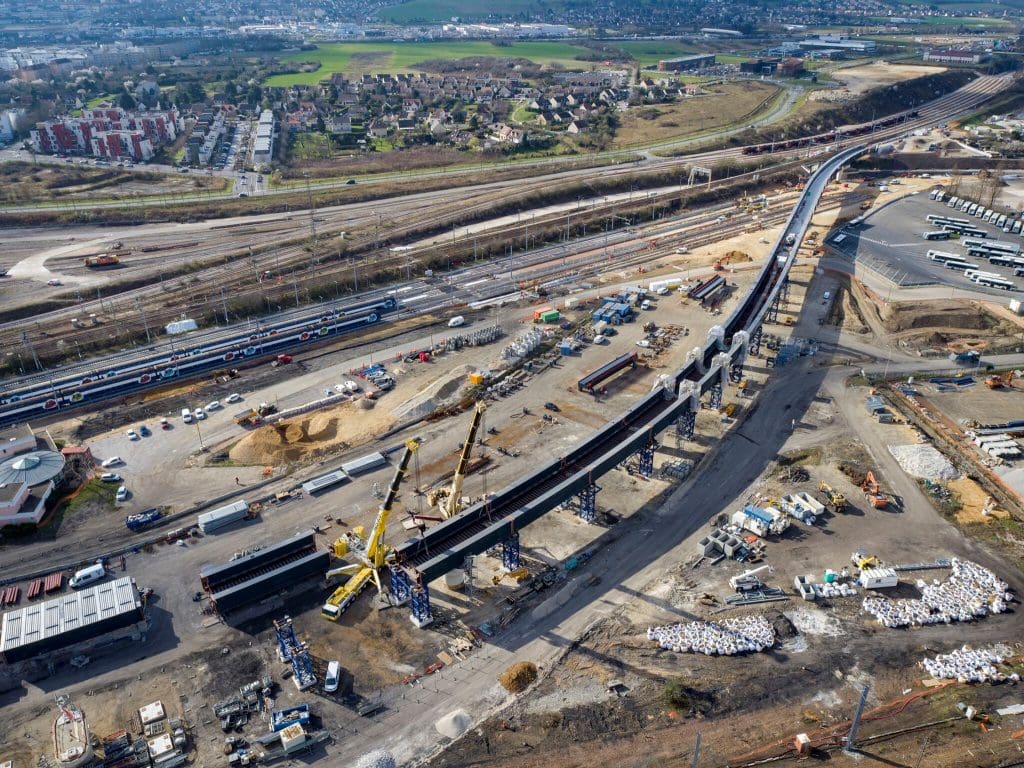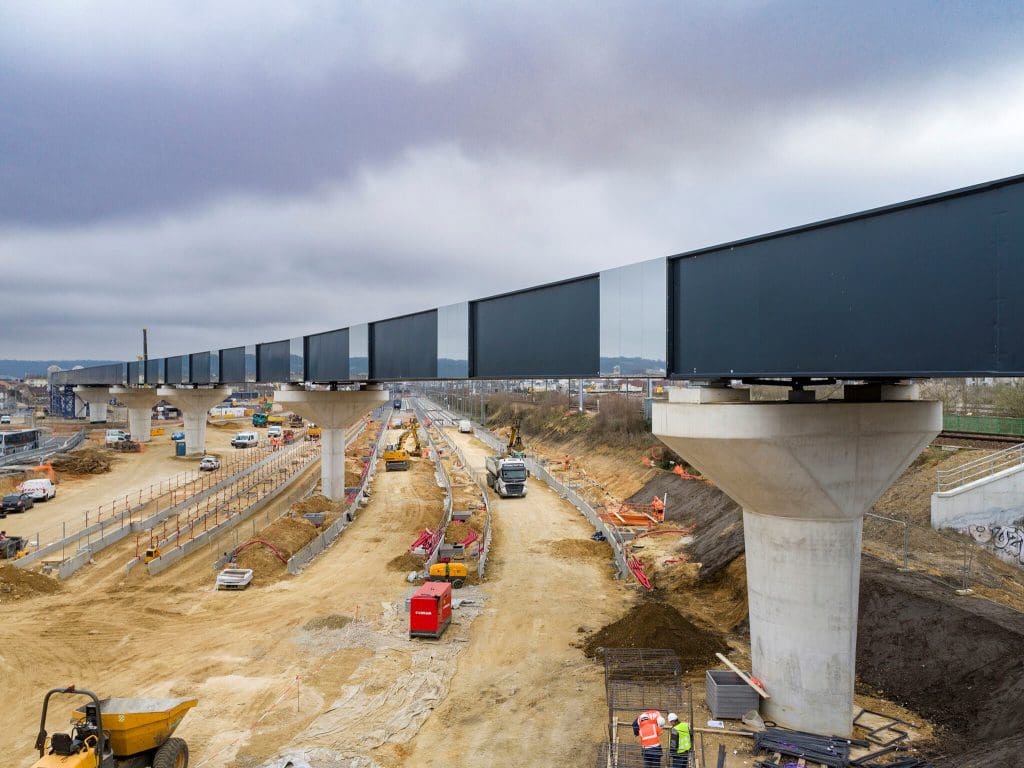Tools such as BIM, IoT and digital twins can help to significantly simplify planning, reduce costs and improve the operational efficiency of bridge models at any stage of the lifecycle, writes César Flores Rodríguez, chief division officer Planning & Design and Digital Twins, Nemetschek Group, and Dr Detlef Schneider, CEO of Allplan.
Whether it’s the Golden Gate Bridge in San Francisco, Tower Bridge in London or Charles Bridge in Prague, bridges are not simply important transport routes but also symbols and historical landmarks. However, whatever their significance, there is one thing that modern and existing bridges are often not: digital. This is surprising given that digitalisation, through BIM, digital twins, IoT and more, offers numerous advantages throughout the entire lifecycle of a bridge – from planning to renovation or dismantling.
Silos: Time wasters and sources of errors
Even today, the planning of bridges is anything but collaborative and digital. Planning data often comes from different parties, different data sources and is in different formats. Therefore, individual bridge models (in whatever form) rarely match exactly. With traditional 2D tools, planning changes have to be repeatedly updated manually across hundreds of drawings and calculations, leading to planning errors and inconsistencies, which, in turn, leads to delays and cost overruns on construction sites.
Due to this lack of collaboration, planning teams spend valuable time reworking and correcting errors – time that could be devoted to new projects. Furthermore, inconsistent planning data can lead to delays in the construction of a bridge, costing time and money. And, last but not least, retrofitting and conversion work wastes precious building materials and emits unnecessary amounts of CO2.
Planning is much more efficient and less error-prone with collaborative digital tools. Plan changes can be incorporated into 3D models that all project stakeholders have access to, creating workflows instead of silos. Digital tools have already proven themselves in practical use across various project phases – from new construction to inventory recording.
New bridges, new tools: Mantes-la-Jolie viaduct, Paris
One example of a digital success story is located to the west of Paris. Part of the Eole project, the RER E line introduces 55km of new rail track and new stations en route. The line’s terminus is in the Mantes-la-Jolie triangle. COGECI, a French design office with extensive rail experience, was responsible for executing studies of a new, 600m long viaduct at Mantes-la-Jolie.

The S-shape of the bridge – and several existing railway tracks nearby – meant that many of the existing railway tracks would need to be located close to the bridge supports, so the accuracy of the location was of the utmost importance.
The steel rail bridge with lateral beams comprises three decks. At each end, is an access ramp with retaining walls and embankments. While the structure is mainly made of steel, the bridge also incorporates a reinforced concrete slab. COGECI studied all the project’s reinforced concrete elements, including those used in the supports, piers, abutments and retaining walls.
Building Information Modelling (BIM) was requested by the client for several reasons, including improved project documentation, enhanced design and construction quality, and better communication with local residents as well as various stakeholders. Additionally, the client wanted to make use of the data generated during the project for future maintenance, operation, and demolition.

BIM Level 2 was specified for this project, with each discipline preparing a sub-model that was combined into a federated model using IFC and openBIM. This way, any clashes or interfaces between different disciplines could be identified early and a digital as-built model created easily. It was also easier to visualise the interfaces between the bridge structure and the infrastructure of the future sidings.
The Mantes-la-Jolie viaduct was COGECI’s first large-scale use of Allplan Bridge and Allplan Engineering, and the experience convinced it to continue to use bridge design software. The added value of the 3D visualisations provided superior insight than 2D drawings, and provided a more organised approach to coordinating with other disciplines.
Digitisation in the inventory: smartBRIDGE Hamburg
Digital tools also deliver many benefits for existing buildings, like the Köhlbrand Bridge in Hamburg. Built in 1974, it is the second longest road bridge in Germany and one of the busiest. The cable-stayed bridge plays an important role for the local economy at the port of Hamburg. The bridge’s operator, the Hamburg Port Authority, wanted a more effective way to maintain and operate it. The smartBRIDGE Hamburg project was initiated in 2019. A digital twin of the bridge was created using openBIM, ICF data exchange formats and the BIM Collaboration Format (BCF).
Due to the age of the bridge and the daily traffic volume, continuous, real-time monitoring was the best way to detect any deficiencies that could affect its safety and operation. Necessary repairs can be planned at an early stage, and disruption to traffic can be minimised.
A BIM model for the bridge had to be designed from scratch. For this purpose, several BIM applications were used to create a very detailed digital bridge model. The entire bridge structure and its individual components could then be visualised for the first time with this model.
With this database for its digital twin, operators integrated IoT sensor data and traditionally collected bridge inspection and maintenance data into their bridge model. This enables real-time monitoring and automatically issues alerts when problems or defects are detected. The datasets are accessible to the asset management system, so that predictive maintenance can be planned and carried out effectively.
The digital twin also enables various simulations to be carried out. Operators can now test different scenarios when a problem is detected and evaluate the results before implementing resolutions. Given it is so important to infrastructure, the findings are crucial in order to ensure safety and to minimise traffic disruption.
Workflows instead of silos along the lifecycle
Those two examples clearly show the role digital tools play simplifying planning, reducing costs and emissions while helping bridges operate sustainably and efficiently. The stage of the bridge lifecycle is irrelevant: from planning to dismantling, tools such as digital twins offer significant advantages for everyone involved. It is important to rely on open formats such as openBIM, as it is the only way to successfully “build a bridge” across all disciplines and to avoid data silos.

